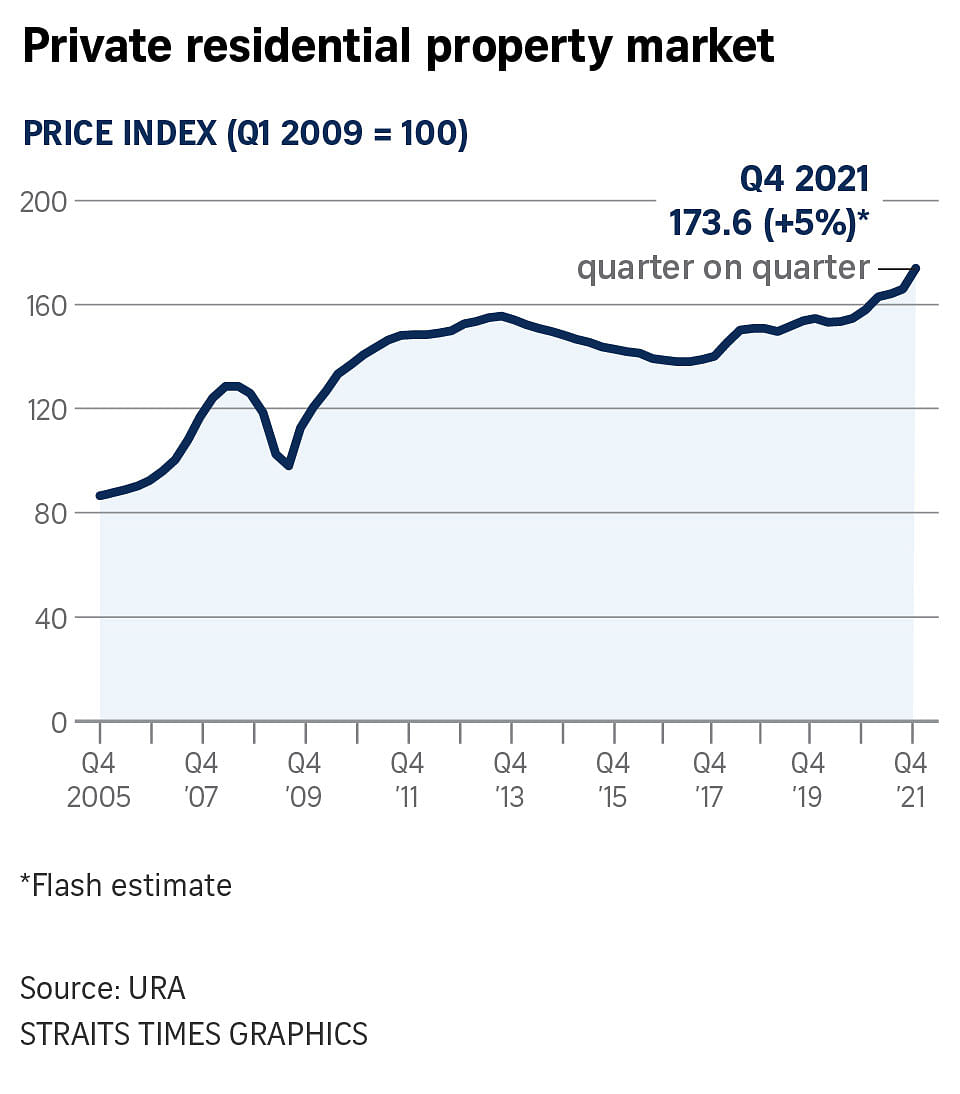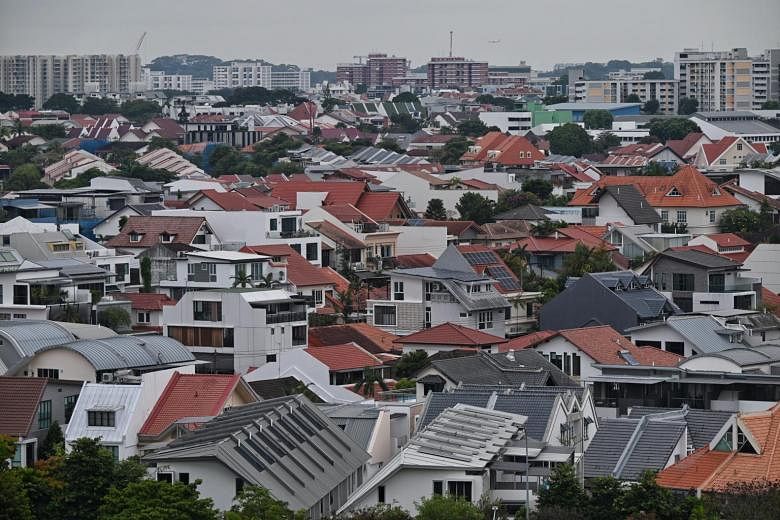SINGAPORE - The growth in Singapore's private home prices accelerated in the final quarter of last year, with a 5 per cent jump over the previous three months, underscoring the hot market that triggered December's new property cooling measures.
For the whole of 2021, prices surged 10.6 per cent, which is the highest annual growth recorded since 2010, when they climbed 17.6 per cent. In 2020, prices gained just 2.2 per cent.
The robust fourth-quarter performance extended gains for a seventh straight quarter, according to flash estimates from the Urban Redevelopment Authority (URA) on Monday (Jan 3). It comes after prices rose 1.1 per cent in the third quarter, 0.8 per cent in the second quarter, and 3.3 per cent rise in the first quarter.
It also marked the highest quarterly increase since the second quarter of 2010, when prices rose 5.3 per cent.
The overall price growth was driven by the non-landed segment, which jumped 5.4 per cent in the fourth quarter, after a mere 0.7 per cent gain in the third quarter. Fuelling this were firm private resale prices and new launches such as Jervois Mansion, CanningHill Piers, and Perfect Ten - which had higher benchmark prices, analysts say.
Prices of landed property climbed 3.7 per cent in the fourth quarter, compared with a 2.6 per cent rise in the previous quarter, the URA data showed. Thanks to a thriving good class bungalow (GCB) market, landed property prices jumped 13.1 per cent in 2021 - their best year since 2010, when prices surged 30.8 per cent.
The robust landed market was fuelled by "wealth creation from the technology and biomedical sectors, and gains in the stock and crypto markets last year", Mr Wong Xian Yang, head of research for Singapore at Cushman & Wakefield, said.
The city fringe, or the rest of central region, led the non-landed sub-markets with a 7.3 per cent jump, compared with a 2.6 per cent gain in the previous quarter. This was due mainly to the launch in November of the 696-unit CanningHill Piers, which sold 582 units at a median price of $2,886 psf, analysts say.
In the suburbs, or outside central region, non-landed home prices jumped 5.4 per cent following a 0.1 per cent dip in the previous quarter. This segment is driven largely by HDB upgraders who have benefited from a buoyant HDB resale market, said Mr Ong Teck Hui, senior director of research and consultancy at JLL.
Prices in the prime districts, or core central region gained 2.5 per cent in the fourth quarter, following a 0.5 per cent fall in the third quarter. This was supported by strong resales and new home sales, and the opening of vaccinated travel lanes during the quarter, PropNex said.
But Ms Tricia Song, CBRE's research head for South-east Asia, noted that the 230-unit Perfect Ten in Bukit Timah Road saw subdued interest despite offering a one-time discount of 5 per cent after cooling measures were announced.
As at Jan 2, 12 units were sold at an average price of $3,268 psf, she said, citing URA Realis data.
For the whole of 2021, prices in the prime area rose 3.7 per cent, those in the city fringe 16.9 per cent and those in the suburbs 8.4 per cent.
Analysts say the growth in private home prices will likely moderate at flat to 3 per cent this year due to the new cooling measures, similar to how the market behaved after the 2018 round of curbs.

"After cooling measures were implemented in 2018, private home price growth moderated from 7.9 per cent in 2018 to 2.7 per cent in 2019 and 2.2 per cent in 2020. Similarly, the price index slipped for three years after cooling measures were implemented in 2013," Ms Christine Sun, senior vice-president of research and analytics at OrangeTee & Tie said.
The latest round of property curbs include higher additional buyer's stamp duty (ABSD) rates - up by 5 to 15 percentage points - for all individuals and entities except Singapore citizens and permanent residents buying their first residential property.
The total debt servicing ratio threshold and the loan-to-value limits for Housing Board loans were also tightened.
"It may be a tough first six months in 2022, as deals may take longer to close due to a mismatch between sellers' and buyers' price expectations," Mr Eugene Lim, ERA's key executive officer, said.
"Investors and foreign buyers are most affected by the increase in ABSD rates. We expect them to wait and watch over the next six to nine months on whether to enter the market again," he added.


